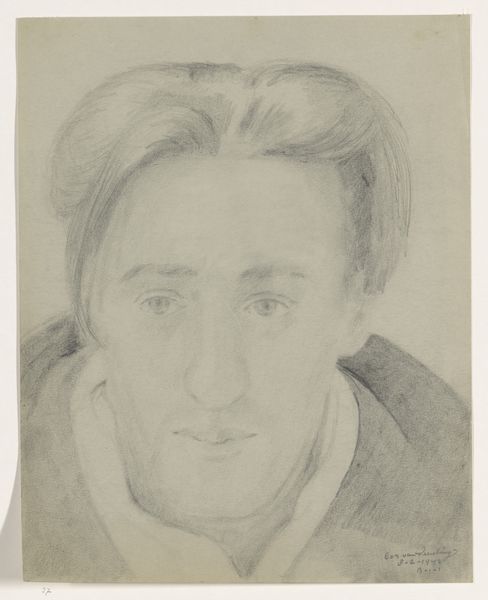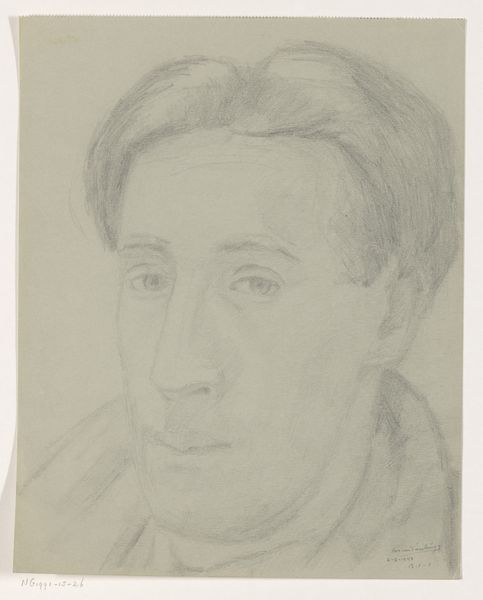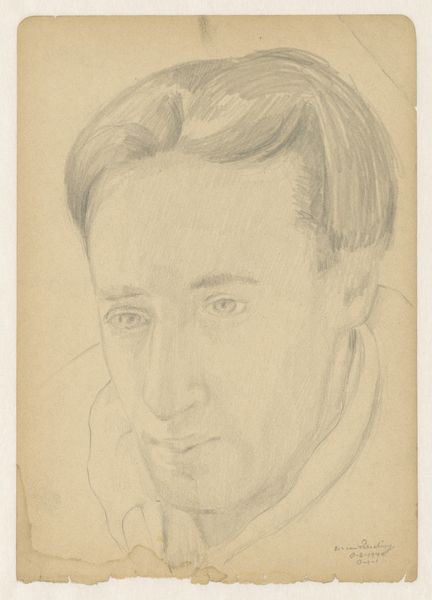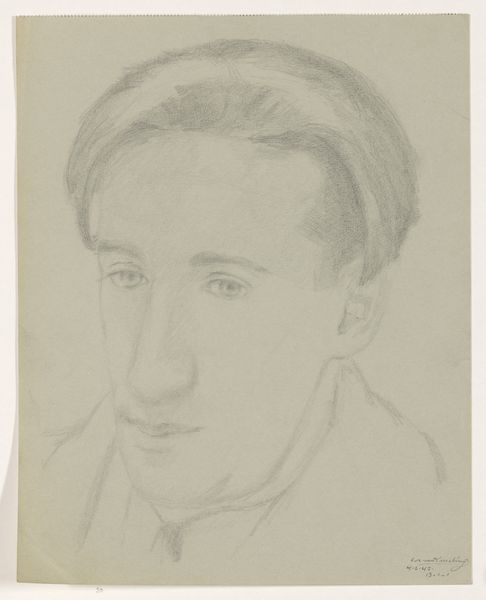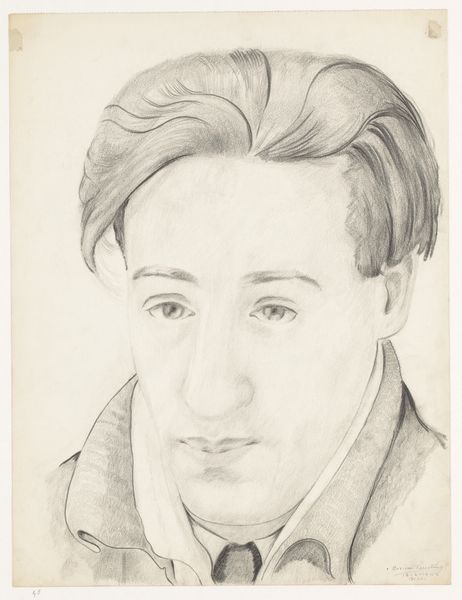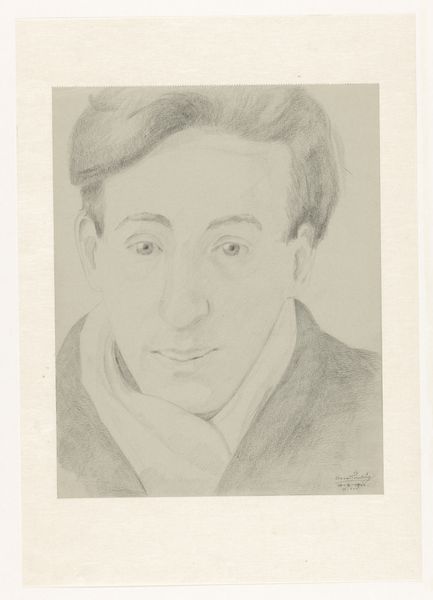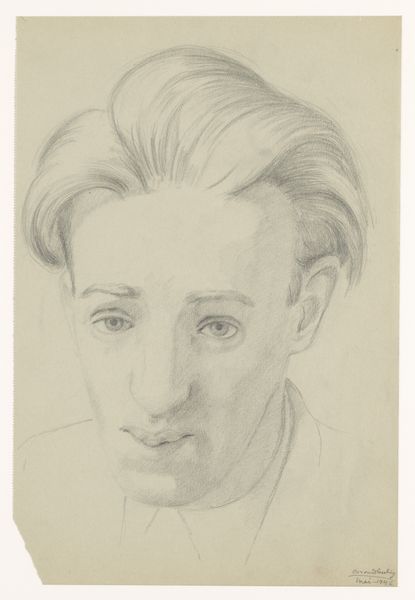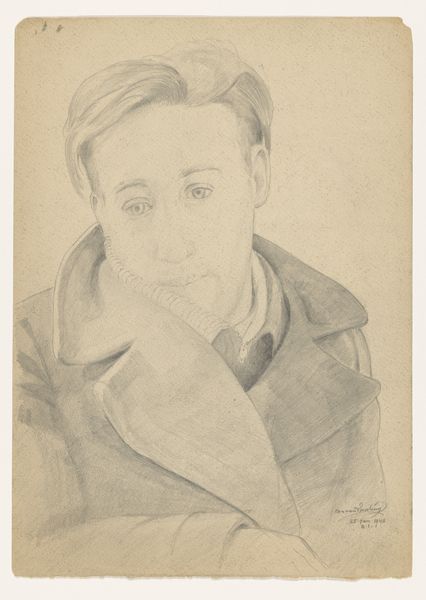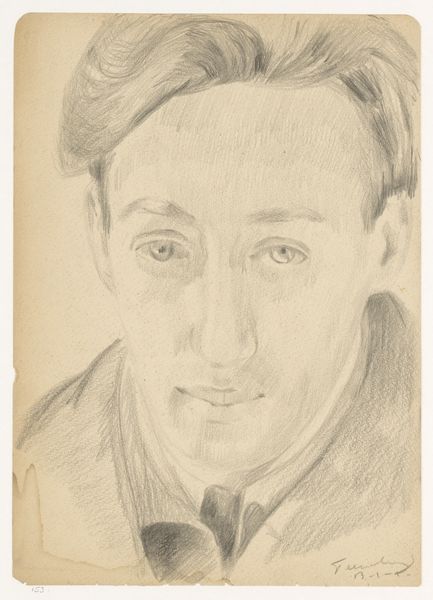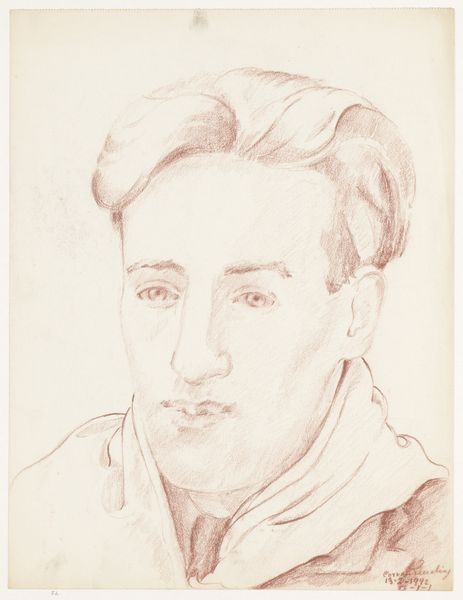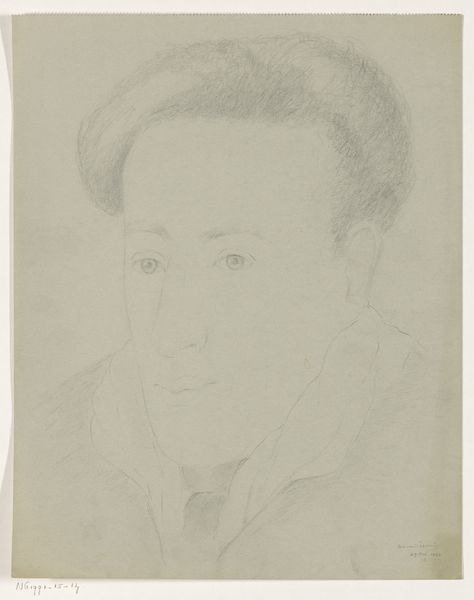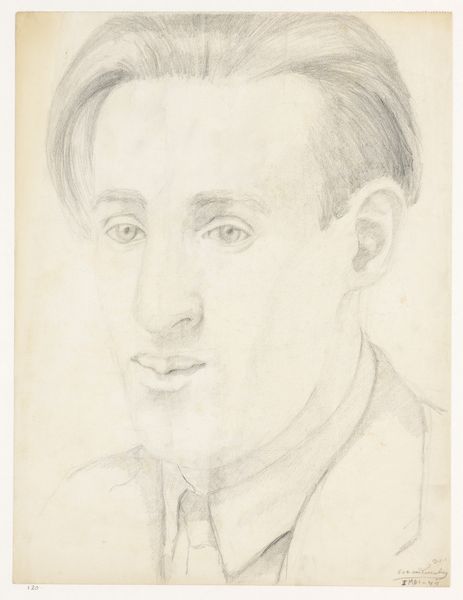
drawing, pencil
#
portrait
#
drawing
#
self-portrait
#
caricature
#
pencil drawing
#
pencil
#
portrait drawing
#
modernism
Dimensions: height 30.5 cm, width 24.5 cm
Copyright: Rijks Museum: Open Domain
Curator: This is "Zelfportret en face: B-1-1, 31 januari," a self-portrait created possibly in 1942 by Cor van Teeseling. It’s a pencil drawing currently held in the Rijksmuseum collection. Editor: Gosh, the way the light falls... It’s melancholy. Stark but tender. There’s this vulnerability, like looking directly into a raw emotion caught on paper. Does that make sense? Curator: It absolutely does. The context of its creation is important. If it truly is from 1942, Teeseling would have been living under Nazi occupation in the Netherlands. The Dutch art world was experiencing tremendous upheaval and many artists faced persecution. Editor: Wow, suddenly that quietness reads differently, doesn’t it? It’s like the silence before a storm, etched with incredible focus. Did he use a mirror or sketch from his reflection in a puddle? What's your interpretation of his method? Curator: We don’t know for certain, of course, but analyzing the angle and details suggests a mirror. Also consider, self-portraiture often served as a form of resistance, or an affirmation of identity in turbulent times. The very act of depicting oneself became political. Editor: I see it. I am drawn in and almost have this feeling he knows something I do not know. Curator: Precisely. His choice of a humble medium like pencil only adds to the intimacy and accessibility, making the artwork almost universally accessible. His gaze defies those times! Editor: I'm struck now too by his direct gaze, almost unnervingly. There's no idealization, but it also feels... strangely resilient? Did he believe that something like the Nazi oppression was soon to end? Curator: The beauty of art is in the many ways we can interpret it. Knowing this work and more about that specific historical moment deepens our experience when viewing a “simple” piece made by pencil on paper. Editor: It absolutely does. Looking at this portrait, I feel seen by someone who was also looking so intently. It makes you wonder about everything this artist must have seen... I feel like I just saw a ghost. Curator: It makes one hope, even amid great challenges. I think we are agreed!
Comments
No comments
Be the first to comment and join the conversation on the ultimate creative platform.
